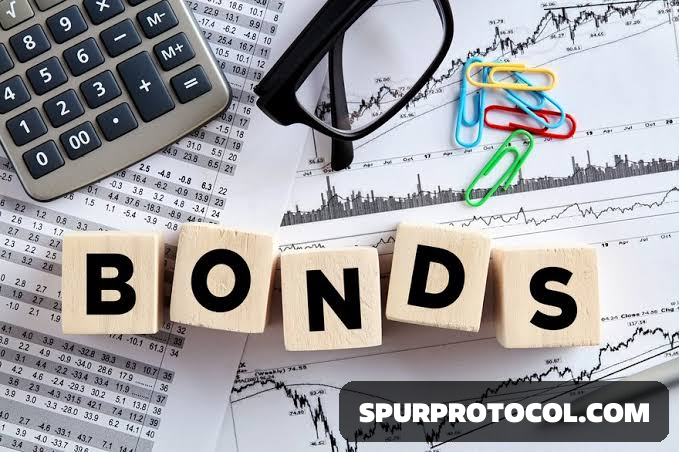Trading; The Fixed Income Market
Fixed income securities such as Treasury bonds are a type of debt instrument that provides returns in the form of regular, or fixed, payments and repayments of the principal when maturity is reached. These instruments are issued by governments, corporations and other entities to finance their operations. They differ from equity, as they do not entail ownership in a company, but bonds usually have seniority of claim in cases of bankruptcy or default.
Go Back

🕒 9:22 AM
📅 Mar 22, 2025
✍️ By alew1994
The Fixed Income Market
Fixed income securities such as Treasury bonds are a type of debt instrument that provides returns in the form of regular, or fixed, payments and repayments of the principal when maturity is reached. These instruments are issued by governments, corporations and other entities to finance their operations. They differ from equity, as they do not entail ownership in a company, but bonds usually have seniority of claim in cases of bankruptcy or default.
Fixed income securities are generally considered a safer investment than equities or other market investments, but do not usually offer investment returns as high as those that can be obtained through other investments.
The term fixed income refers to interest payments that an investor receives, which are based on the creditworthiness of the borrower and current market rates. Generally speaking, fixed income securities such as bonds pay a higher rate of interest - known as the coupon - the longer their maturities are. At the end of the term or maturity, the borrower returns the borrowed money, known as the principal, or par value, amount.
The primary risks associated with fixed income securities concern the borrower’s vulnerability to defaulting on its debt. In turn, this risk is incorporated in the interest or coupon that the security pays the investor. Additional risks involving the exchange rate for international bonds can be of concern, as well as the risk that changes in interest rates may increase (or decrease) the market value of a bond currently held. This is known as interest rate risk.
Credit/default risk arises if the issuer of a security is unable to pay interest and/or principal in a timely fashion. The probability of credit/default risk occurring depends on the issuer’s ability to meet their financial obligations and on their credit worthiness. There is a negative correlation between credit rating and yield – the lower a bond issuer’s credit rating, the higher the yield that will be offered to compensate for higher risk. A change in the issuer’s credit rating affects the value of their outstanding fixed income securities.
There is a purchasing power risk associated with fixed income securities because the real rate of return on fixed income investments equals the rate of return minus the rate of inflation. During periods of high inflation, the real rate of return on fixed income investments may become negative.
Bond Pricing
The price of a bond depends on several characteristics that apply to every bond issued. These characteristics are as follows:
• Coupon, or lack thereof - A bond may or may not come with attached coupons. A coupon is stated as a nominal percentage on the par value of the bond. Each coupon is redeemable per period for that percentage. A bond may also come with no coupon. In this case, the bond is known as a zero-coupon bond. Zero-coupon bonds are typically priced lower than bonds with coupons.
• Principal/par value - Every bond comes with a par value – the principal amount that is repaid at maturity. Without the principal value, a bond would have no use. The principal value is to be repaid to the lender (the bond purchaser) by the borrower (the bond issuer). A zero-coupon bond pays no coupons but guarantees the principal amount at maturity. The interest paid on a zero-coupon bond is delivered in the form of the bond price being less than the principal amount that will be paid at maturity. For example, a zero-coupon bond with a par value of $1,000 might be available for purchase for $900. When the purchaser of the bond receives the $1,000 par value on the bond’s maturity date, they have, in effect, received approximately 10% interest on the bond.
• Yield to maturity - Bonds are priced to yield a certain return to investors. A bond that sells at a premium (where price is above par value) will have a yield to maturity that is lower than the coupon rate. Alternatively, the causality of the relationship between yield to maturity and price may be reversed. A bond could be sold at a higher price if the intended yield (market interest rate) is lower than the coupon rate. This is because the bondholder will receive coupon payments that are higher than the market interest rate, and will therefore pay a premium for the difference.
• Coupon Periods to Maturity – Bonds vary in the number of coupon payments that occur until the bond matures. More frequent coupon (interest) payments are considered more desirable and typically increase the price of a bond.
All else being equal, the following statements about bond pricing are true:
• A bond with a higher coupon rate will be priced higher.
• A bond with a higher par value will be priced higher.
• A bond with a higher number of periods to maturity will be priced higher.
• A bond with a higher yield to maturity or market rates will be priced lower.
An easier way to remember this is that bonds are priced higher for all characteristics except for yield to maturity. A higher yield to maturity results in lower bond pricing.
